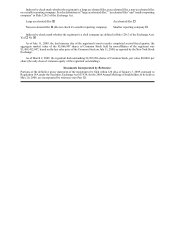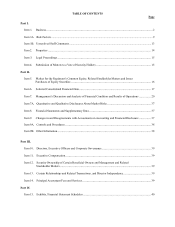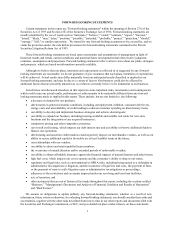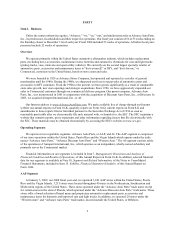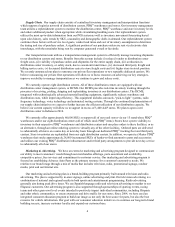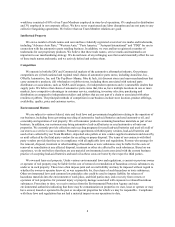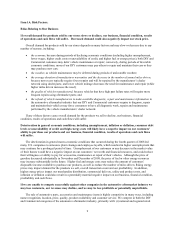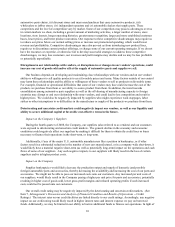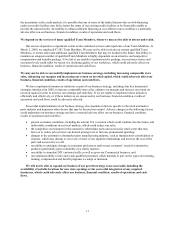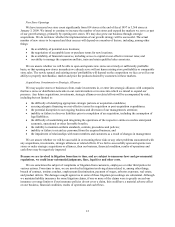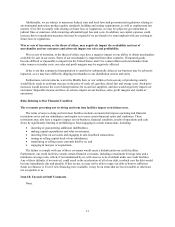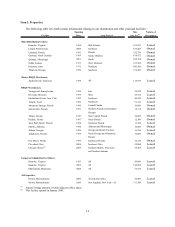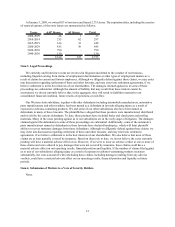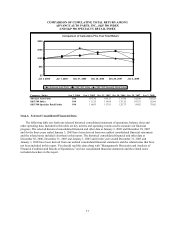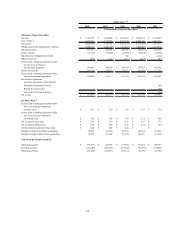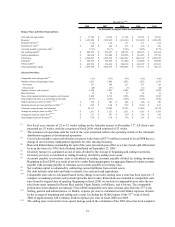Advance Auto Parts 2008 Annual Report Download - page 23
Download and view the complete annual report
Please find page 23 of the 2008 Advance Auto Parts annual report below. You can navigate through the pages in the report by either clicking on the pages listed below, or by using the keyword search tool below to find specific information within the annual report. 9
Item 1A. Risk Factors.
Risks Relating to Our Business
If overall demand for products sold by our stores slows or declines, our business, financial condition, results
of operations and cash flows will suffer. Decreased demand could also negatively impact our stock price.
Overall demand for products sold by our stores depends on many factors and may slow or decrease due to any
number of reasons, including:
• the economy, because during periods of declining economic conditions (including higher unemployment,
lower wages, higher credit costs or unavailability of credit, and higher fuel or energy prices), both DIY and
Commercial customers may defer vehicle maintenance or repair; conversely, during periods of favorable
economic conditions, more of our DIY customers may pay others to repair and maintain their cars or they
may purchase new cars;
• the weather, as vehicle maintenance may be deferred during periods of unfavorable weather;
• the average duration of manufacturer warranties and the decrease in the number of annual miles driven,
because newer cars typically require fewer repairs and will be repaired by the manufacturer’s dealer
network using dealer parts; and lower vehicle mileage decreases the need for maintenance and repair (while
higher miles driven increases the need);
• the quality of vehicles manufactured, because vehicles that have high part failure rates will require more
frequent repairs using aftermarket parts; and
• the refusal of vehicle manufacturers to make available diagnostic, repair and maintenance information to
the automotive aftermarket industry that our DIY and Commercial customers require to diagnose, repair
and maintain their vehicles may force consumers to have all diagnostic work, repairs and maintenance
performed by the vehicle manufacturers’ dealer network.
If any of these factors cause overall demand for the products we sell to decline, our business, financial
condition, results of operations and cash flows will suffer.
Deterioration in general economic conditions, including unemployment, inflation or deflation, consumer debt
levels or unavailability of credit and high energy costs will likely have a negative impact on our customers’
ability to purchase our products and our business, financial condition, results of operations and cash flows
will suffer.
The deterioration in general macro-economic conditions that occurred during the fourth quarter of 2008 led
many U.S. companies to announce plant closings and employee layoffs, which resulted in higher unemployment that
may continue for a prolonged period of time. Unemployment of our customers or any decrease in the market value
of their homes would have a negative impact on our customers’ net worth and financial resources, and could reduce
their willingness or ability to pay for accessories, maintenance or repair of their vehicles. Although the price of
gasoline decreased substantially in November and December of 2008, the price of fuel or other energy resources
may increase substantially in the future. Higher fuel and energy costs may reduce the amount of customers’
disposable income available to purchase our products, as well as reduce the number of miles driven. Rising energy
prices may impact demand for the products we sell, overall transaction count and our profitability. In addition,
higher energy prices impact our merchandise distribution, commercial delivery, utility and product costs, and
inflation or deflation could also result in a potentially material negative impact on our business, financial condition,
profitability and cash flows.
If we are unable to compete successfully against other companies in the automotive aftermarket industry we
may lose customers, our revenues may decline, and we may be less profitable or potentially unprofitable.
The sale of automotive parts, accessories and maintenance items is highly competitive in many ways, including
name recognition, location, price, quality, product availability and customer service. We compete in both the DIY
and Commercial categories of the automotive aftermarket industry, primarily with: (i) national and regional retail


